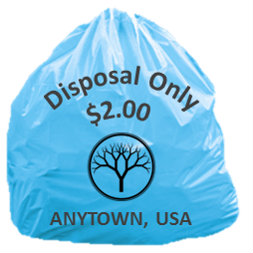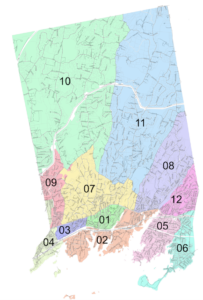
We can fix this. It’s not that difficult to do. You would be shocked at how much less garbage you generate if you participate in programs like food scrap recycling or eliminate single-use disposable items from your household.
Greenwich has a twin trash problem. One is a fiscal problem — how to come up with roughly $1MM annually to pay for the increased cost of recycling. The other is a capacity problem — how to reduce the volume of trash because Connecticut is running out of space for it.
Several solutions have been put forward— Pay as You Throw (PAYT), tipping fees, and, perhaps amusingly, hosting a town party to pay for our disposal costs. While all three solutions are directed at solving the fiscal problem, only one of them — Pay As You Throw — impacts the capacity problem.

Connecticut’s five trash-burning plants are at capacity. The aging 33-year-old Materials Innovation and Recycling Authority (MIRA) facility in Hartford, which serves one-third of Connecticut’s municipalities is frequently shut down for repairs and has now submitted a $330 million upgrade plan so it can remain operational. Unless the state comes through with financing, which is unlikely given the governor’s opposition to taking on new debt, the cost will be covered by increasing tipping fees for municipalities. According to MIRA president Thomas Kirk, fees would need to increase from the $83/ton charged now to about $140/ton. This will be the second shoe that drops for municipalities. Budget shortfalls from rising recycling costs will be compounded by doubled tipping fees to dispose of waste.
Our landfills are also reaching capacity. There is only one major landfill still operating, in Putnam, where the ash generated by MIRA is buried. But according to its operator, the Putnam landfill has about four years of permitted site life remaining. An application to expand the ash landfill in Putnam has drawn major opposition and is on hold after the Wetlands Commission rejected it. A Putnam official with knowledge of area infrastructure told the group Waste Dive that “capacity in New England has shrunk to next to nothing” for ash burial, and that the only likely alternative would be exporting to Virginia or elsewhere at higher costs, if they will even take that much of our ash.”
Trash that is not sent to MIRA gets trucked out of state. Every year, more than 18,000 trucks loaded with Connecticut trash drive it to incinerators as far as Ohio and Virginia. Greenwich spends about $4 million annually to drive its trash to Peekskill, NY. In 2018, Connecticut exported 367,000 tons of household and business trash, on top of the 2.38 million tons it burned in-state. Just think about the carbon impact of this system. Shipping our trash across state lines because we can no longer dispose of it in-state is neither fiscally nor environmentally responsible. While we have yet to figure out how to solve the trash crisis, one thing is clear. We must reduce how much we throw out.
 In 2016, Connecticut set a goal of reducing the amount of trash we generate by 60 percent from 2005 levels. Yet in Greenwich, solid waste tonnage has remained constant at about 37,000 tons per year for the last few years. We must put aside our gripes about buying a $2 garbage bag and think big.
In 2016, Connecticut set a goal of reducing the amount of trash we generate by 60 percent from 2005 levels. Yet in Greenwich, solid waste tonnage has remained constant at about 37,000 tons per year for the last few years. We must put aside our gripes about buying a $2 garbage bag and think big.
We can fix this. It’s not that difficult to do. You would be shocked at how much less garbage you generate if you participate in programs like food scrap recycling which, just launched or eliminate single-use disposable items from your household. But unless we are financially responsible for the costs of our trash disposal, we have no incentive to reduce it.
The advantage of Pay as You Throw is that it creates financial incentives to reduce our waste, which are missing from tipping fees alone. The director of waste for Stonington, which has used a PAYT program since 1992, put it this way. “Imagine if electricity or heating bills were paid by your municipal government through your property taxes. Would you have any incentive to turn off lights when you leave, or watch your thermostat settings?” Garbage is no different.
Visit the Board of Estimate & Taxation directory to communicate directly with its members.

If you’re inspired to take action, write to your RTM members and let them know how you feel.
Got Something to Say?